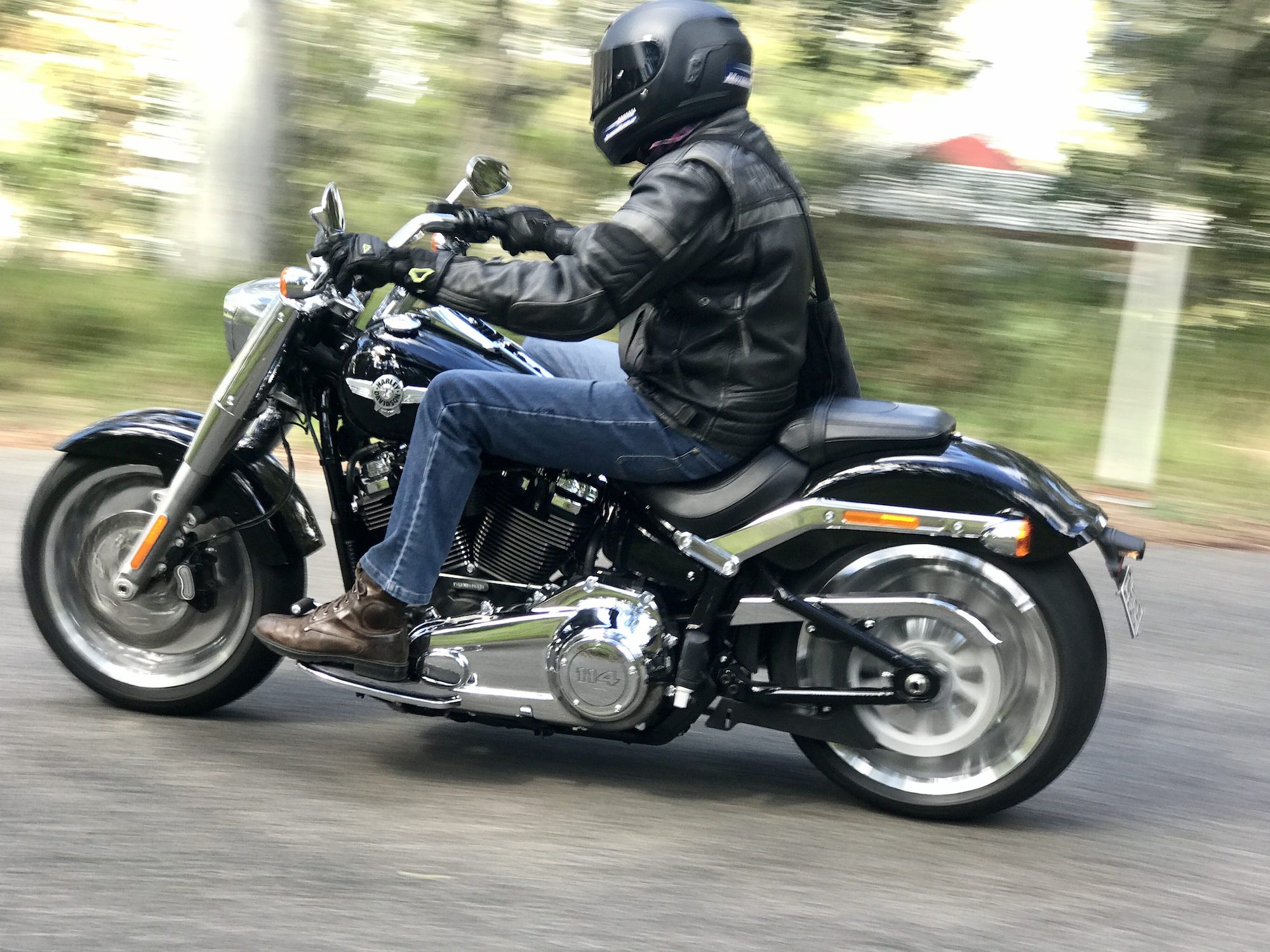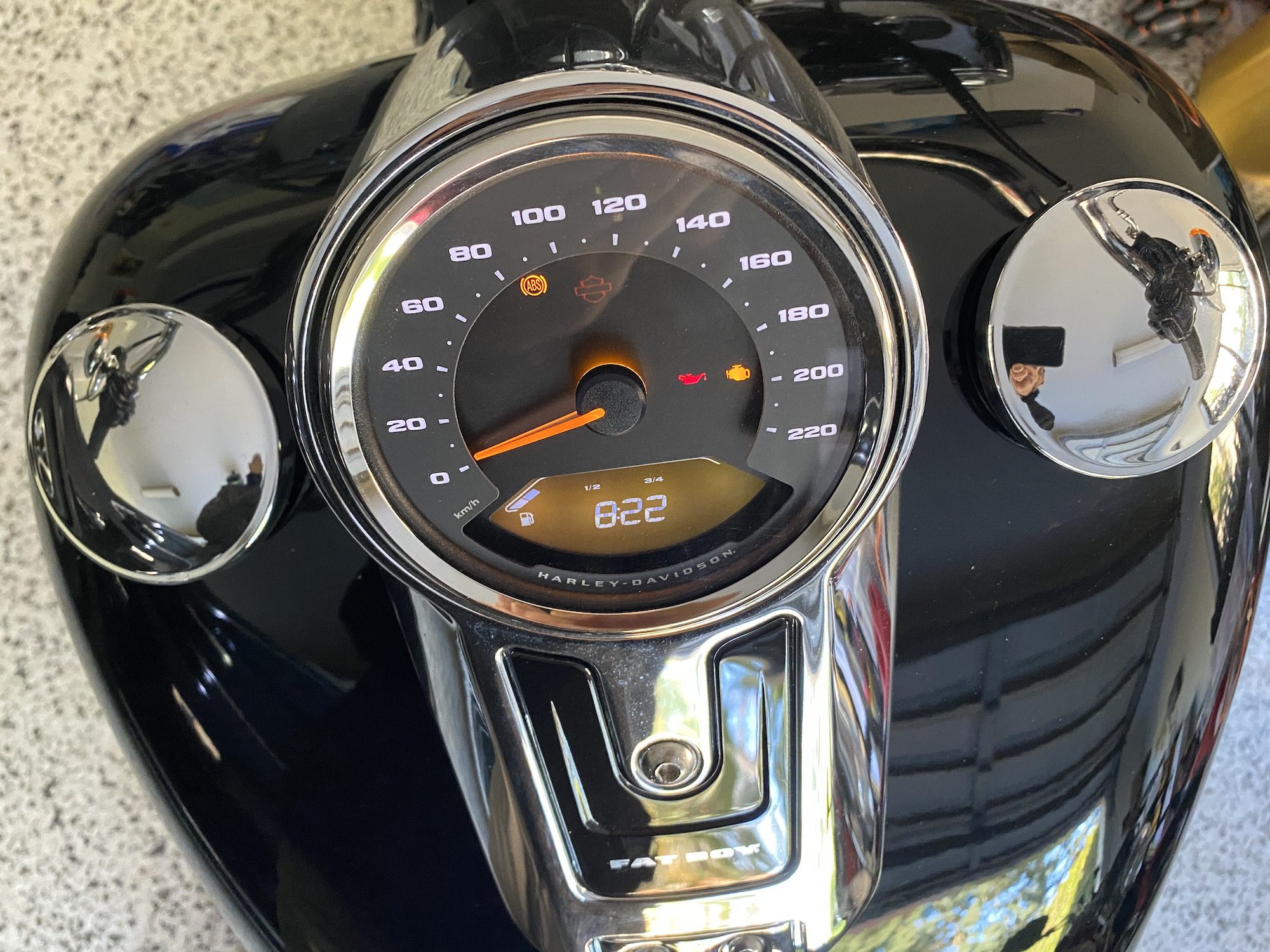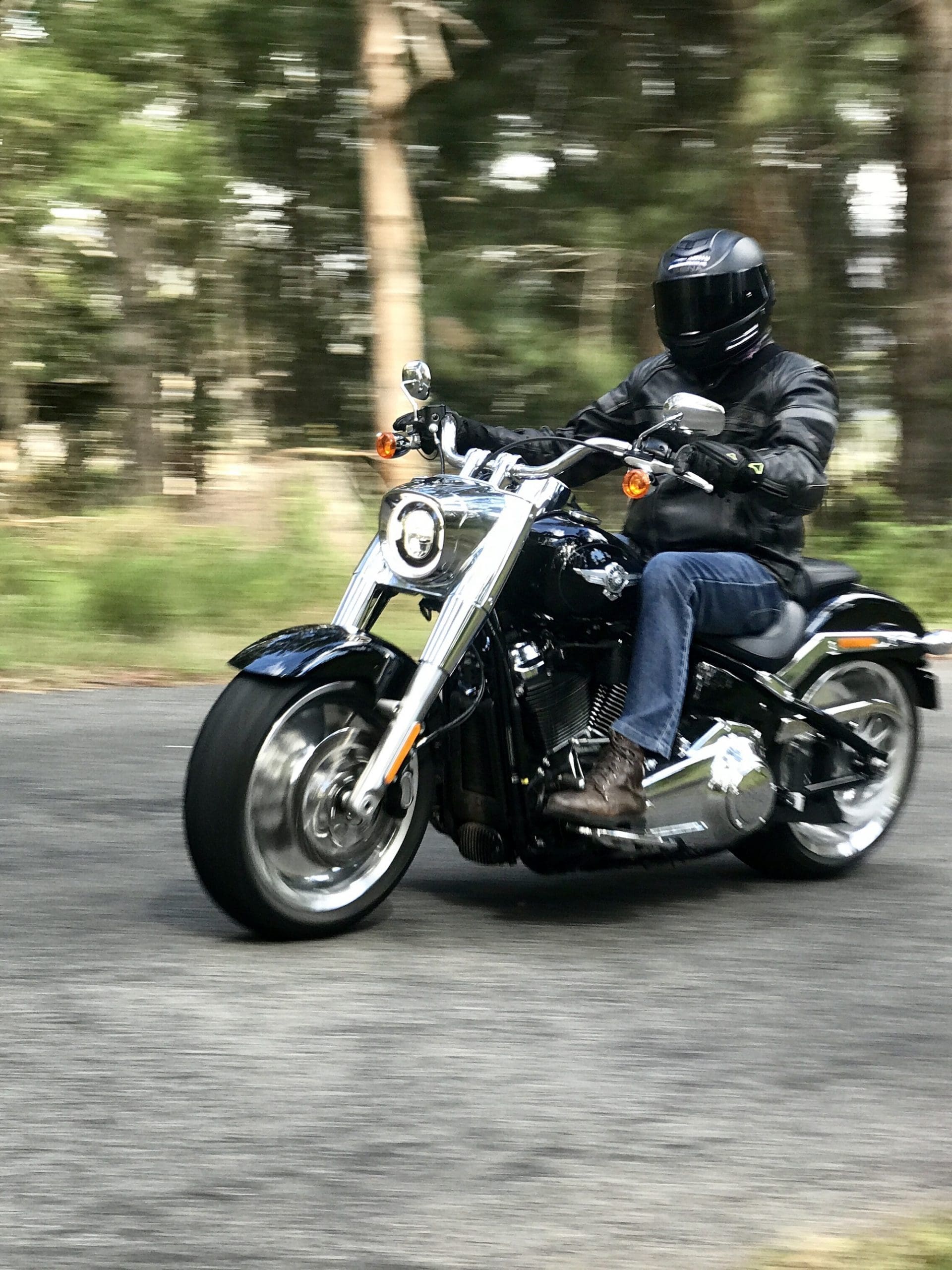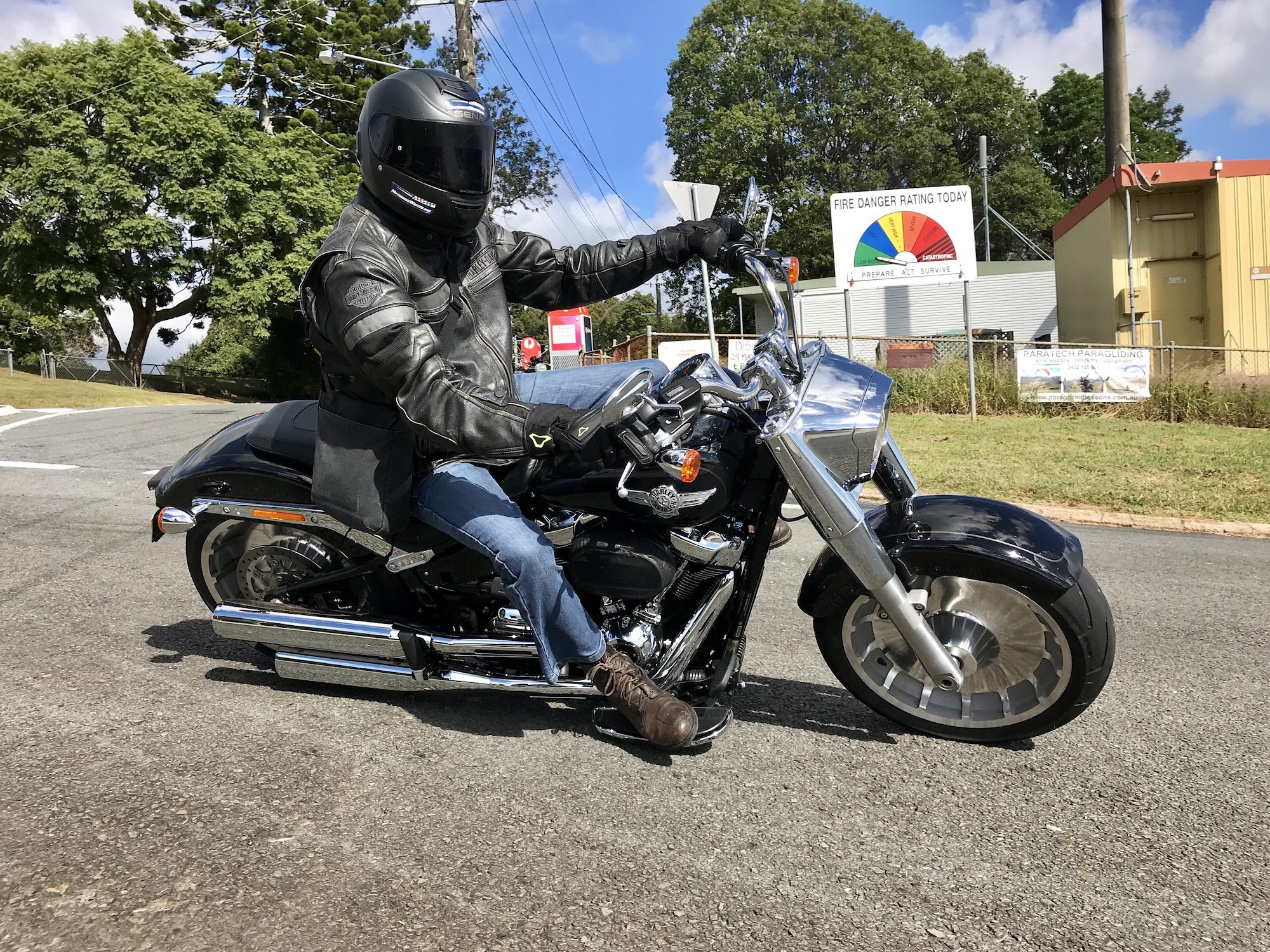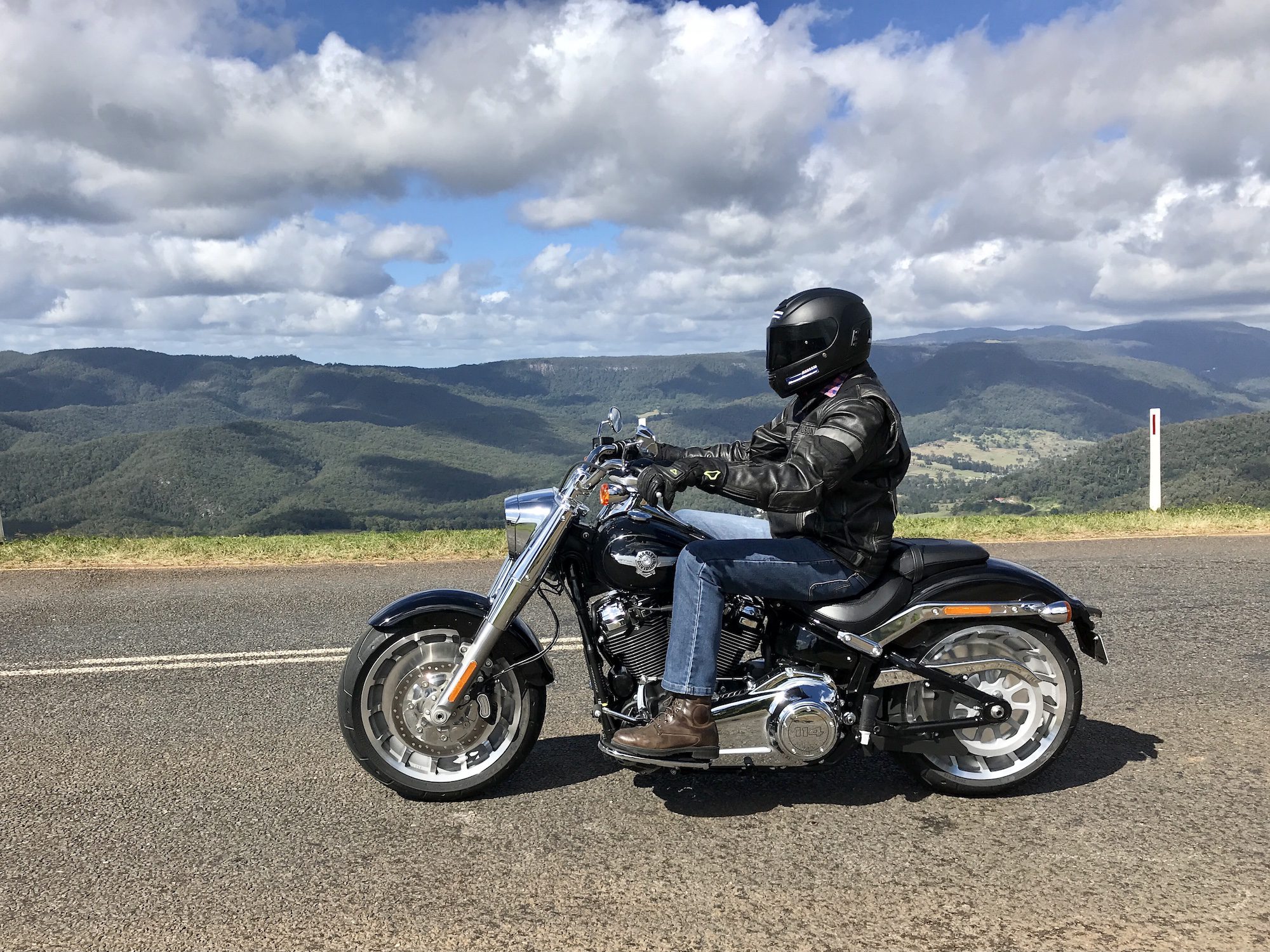Is there any more iconic Harley-Davidson motorcycle than the hot rod Fat Boy?
From Hollywood stardom to being immortalised as a Lego toy, the Softail Fat Boy is the “most copied motorcycle of all time” according to Harley spokesman Kevin Hintz.
It was introduced in 1989 as a 1990 model and designed by legendary Harley stylists Willie G. Davidson and Louie Netz as a modernised version of the 1949 Hydra-Glide.
The next year, it was ridden to instant stardom by Arnold Schwarzenegger in Terminator 2: Judgement Day.
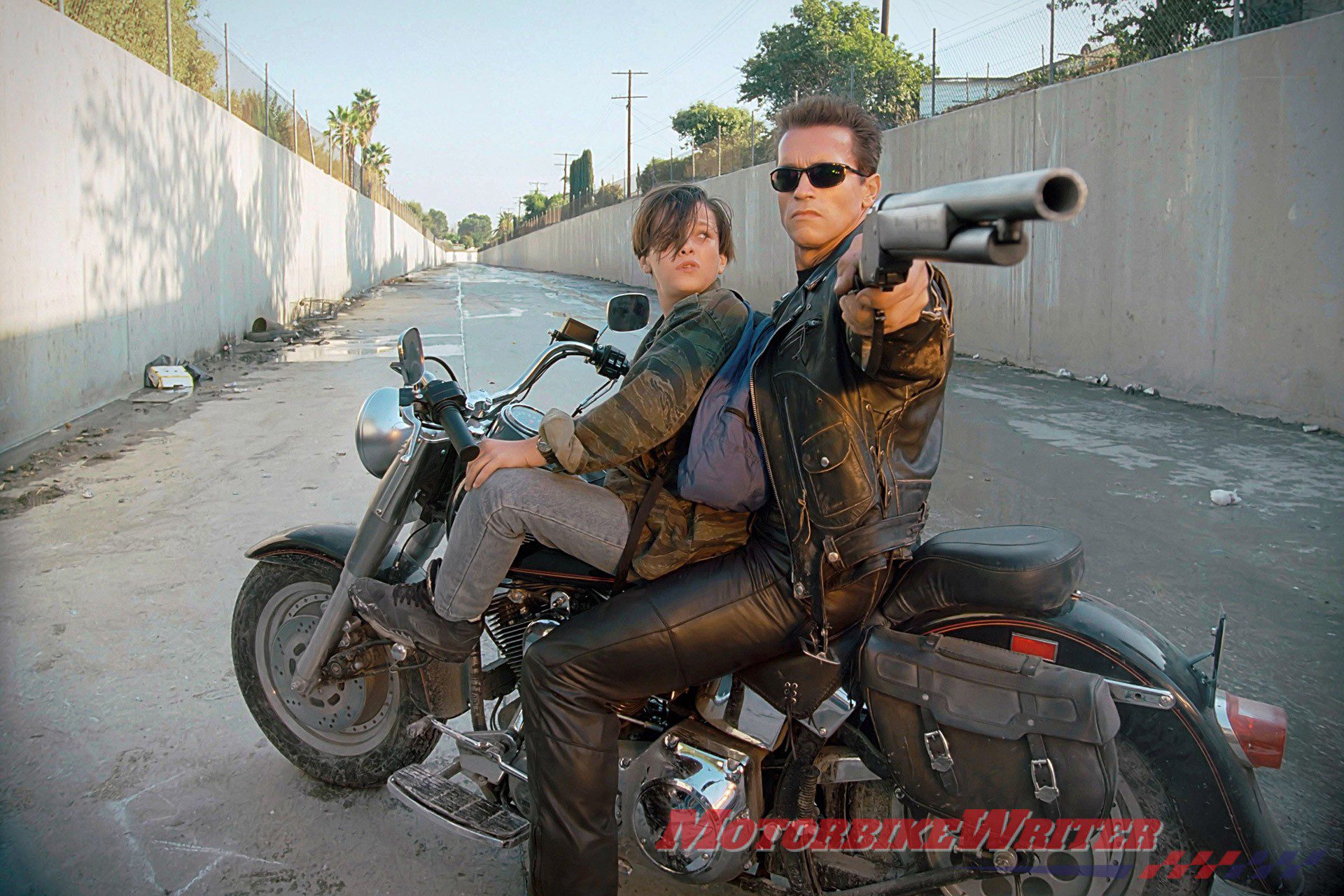
The movie featured a chase scene in which the bike performed a spectacular jump in the LA sewers. Next to The Great Escape jump, it’s probably the most famous motorcycle stunt in cinematic history.
The 3m jump is impressive as stunt double Peter Kent is riding a 300+kg Fat Boy beast, not a relatively nimble little Triumph dirt bike like in The Great Escape.
However, Hollywood trickery did assist as the Fat Boy was supported by 3cm cables. So when bike and ride hit the ground, they weighed only about 80kg. The cables were later digitally erased.
The Fat Boy also played an integral role in the marketing of the film with posters depicting Arnold in leather jacket and pants straddling the bike and carrying his lever-action Winchester shotgun. It’s an image for all time that has bestowed the Fat Boy model with intrinsic and monetary value.
One of several Fat Boys used in the film sold in a Profiles in History auction in 2018 to an unknown bidder for more than $US480,000 and another was restored in 2014 and is on display in the Harley-Davidson Museum in Milwaukee.
Fat Boy has long been one of Harley’s top sellers, especially in Australia, and in 2019 Lego even honoured the model with a special scale-model toy standing 20cm high and made of 1023 pieces.
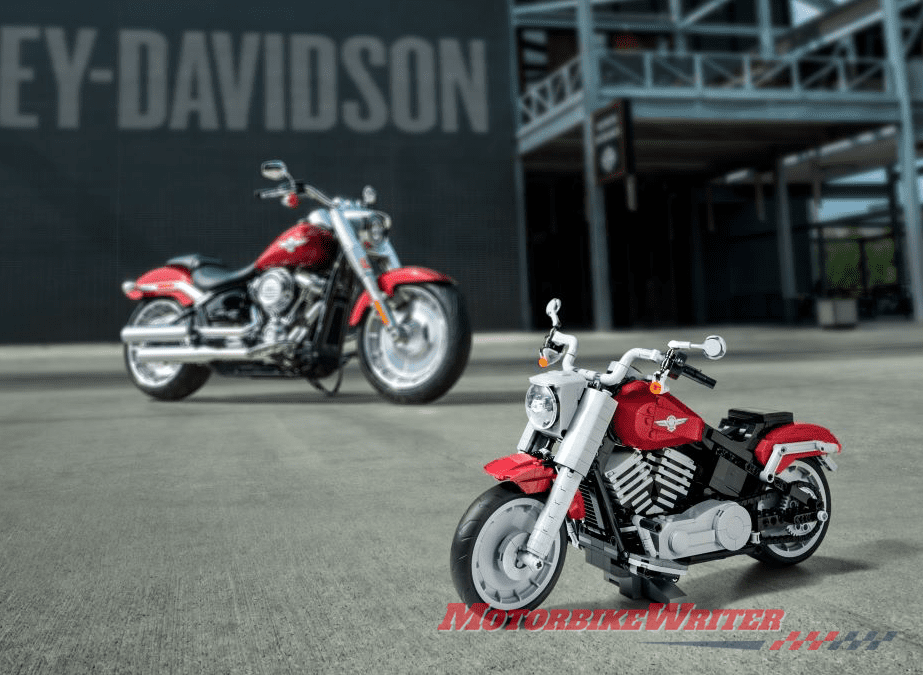
Fat style
In 2017, Harley made major changes to its Softail range with lighter weight, improved suspension, bigger Milwaukee Eight 107 and 114 engines and two new and very stiff frames.
The wider frame accommodates the massively wide 240mm-section rear tyre of the Breakout and Fat Boy, up from 200mm.
For 2021, the Fat Boy gets minor styling updates and drops the 107 engine, only coming with the 114 plant.
The styling changes would only be noticeable to a Fat Boy tragic.
They include some cosmetic changes, a wet weather “sock” on the hi-flow air filter and a digital fuel gauge in the main instruments, replacing the analogue dial in the “dummy” left fuel cap on the tank. Traditionalists may not like that, but the old gauge was difficult to read.
Sadly, they have also dropped the cruise control that was on the previous S variant.
The remaining styling elements are very similar to those of Arnie’s Fat Boy: Solid Lakester wheels, fat forks, heavily chromed headlight nacelle and wide handlebars.
It’s a style that divides opinion, but there is no doubting it has many steadfast fans and even a legion of young fans.
I’ve ridden every Fat Boy model for the past couple of decades and have always noticed the admiring glances it gets from riders and non riders alike.
But is it a case of form over function?
Certainly the major chassis and powertrain changes of 2017 have improved its function … to a degree.
Yes it has better suspension with an external preload adjuster and dual-bending valve telescopic cartridge forks, smoother transmission and 161Nm of grunt yet even better fuel economy!
But that 240mm, low-profile rear tyre is never going to work well.
The low profile results in a harsh ride, despite the improved rear shock.
It also means you need Arnie’s biceps to counter steer the bike and hold your line in corners as the flat profile tyre tries to stand the bike upright.
We’ve all heard it said that Harleys won’t go around corners. That’s rubbish. Many modern Harleys handle quite well, albeit with limited cruiser-style clearance issues. After two weeks with a Fat Boy test bike, the wide floorboards are copping a hammering.
But the Fat Boy also has issues riding in a straight line on anything less than perfect road surfaces.
If there is a camber in the road, the rear tyre will follow it downhill.
If you hit a bump, the rear tyre will push away from it.
And if you ride over any longitudinal crack, the rear tyre will follow it.
This all makes riding the Fat Boy a tiring experience; a bit like an arms session in the gym.
But isn’t that what really appeals about this bike, anyway? Its need for some muscle behind the bars is intrinsic to its macho appeal.
2021 Harley-Davidson Fat Boy
- Price: $33,995 ride-away.
- Warranty: 2 years/unlimited km.
- Service: 1600/8000km.
- Engine: Milwaukee Eight 114 (1868cc) 4-stroke, air-cooled, V-twin; 4-valves per cylinder.
- Power: N/A.
- Torque: 161Nm @ 3000rpm.
- Gearbox: 6-speed, belt drive.
- Weight: 317kg (in running order).
- Suspension front/rear: Dual-bending valve 49mm telescopic forks; coil-over rear monoshock with hydraulic preload adjustment.
- Brakes front/rear: Single 300mm front disc with 4-piston caliper; 292mm rear disc with 2-piston floating caliper.
- Dimensions: 2370mm (L); 985mm (W); 1095mm (H); 1665mm (WB); 675mm (S)


